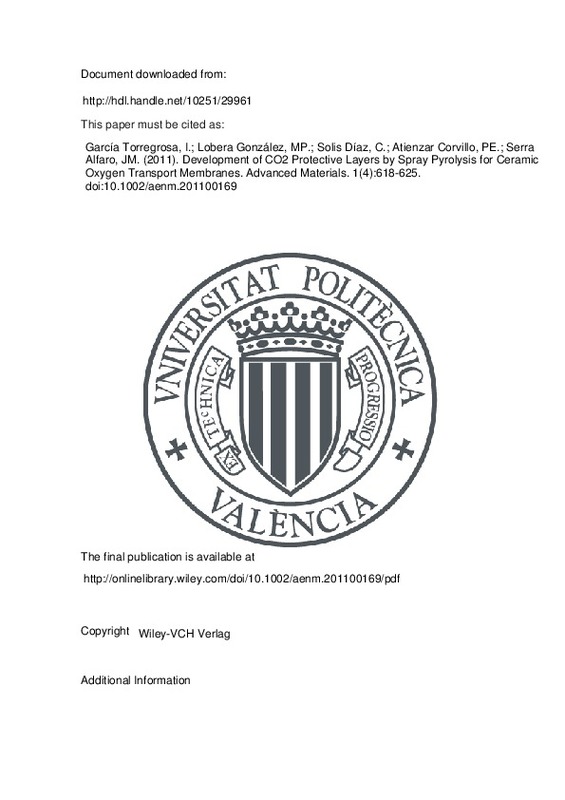JavaScript is disabled for your browser. Some features of this site may not work without it.
Buscar en RiuNet
Listar
Mi cuenta
Estadísticas
Ayuda RiuNet
Admin. UPV
Development of CO2 Protective Layers by Spray Pyrolysis for Ceramic Oxygen Transport Membranes
Mostrar el registro completo del ítem
García Torregrosa, I.; Lobera González, MP.; Solis Díaz, C.; Atienzar Corvillo, PE.; Serra Alfaro, JM. (2011). Development of CO2 Protective Layers by Spray Pyrolysis for Ceramic Oxygen Transport Membranes. Advanced Materials. 1(4):618-625. https://doi.org/10.1002/aenm.201100169
Por favor, use este identificador para citar o enlazar este ítem: http://hdl.handle.net/10251/29961
Ficheros en el ítem
Metadatos del ítem
| Título: | Development of CO2 Protective Layers by Spray Pyrolysis for Ceramic Oxygen Transport Membranes | |
| Autor: | García Torregrosa, Iván Lobera González, Maria Pilar Solis Díaz, Cecilia | |
| Entidad UPV: |
|
|
| Fecha difusión: |
|
|
| Resumen: |
[EN] Ceramic mixed ionic¿electronic conducting (MIEC) membranes enable very
selective oxygen separation from air at high temperatures. Two major potential applications of oxygen-transport membranes are: i) oxygen production ...[+]
|
|
| Palabras clave: |
|
|
| Derechos de uso: | Reserva de todos los derechos | |
| Fuente: |
|
|
| DOI: |
|
|
| Editorial: |
|
|
| Versión del editor: | http://onlinelibrary.wiley.com/doi/10.1002/aenm.201100169/pdf | |
| Código del Proyecto: |
|
|
| Agradecimientos: |
Financial support by the Spanish Ministry for Science and Innovation (Project ENE2008-06302 and FPI Grant JAE-Pre 08-0058), the EU through FP7 NASA-OTM Project (NMP3-SL-2009-228701), and the Helmholtz Association of German ...[+]
|
|
| Tipo: |
|







![[Cerrado]](/themes/UPV/images/candado.png)


